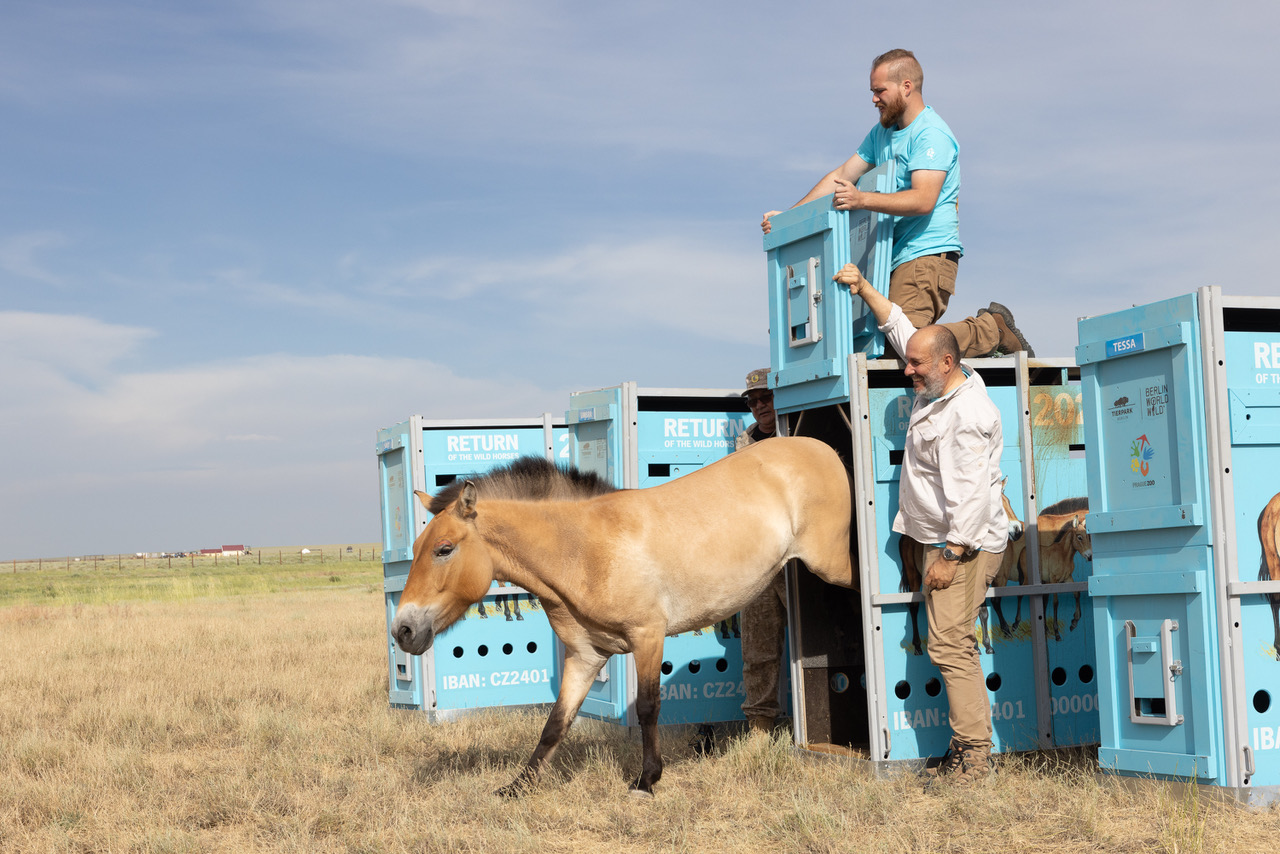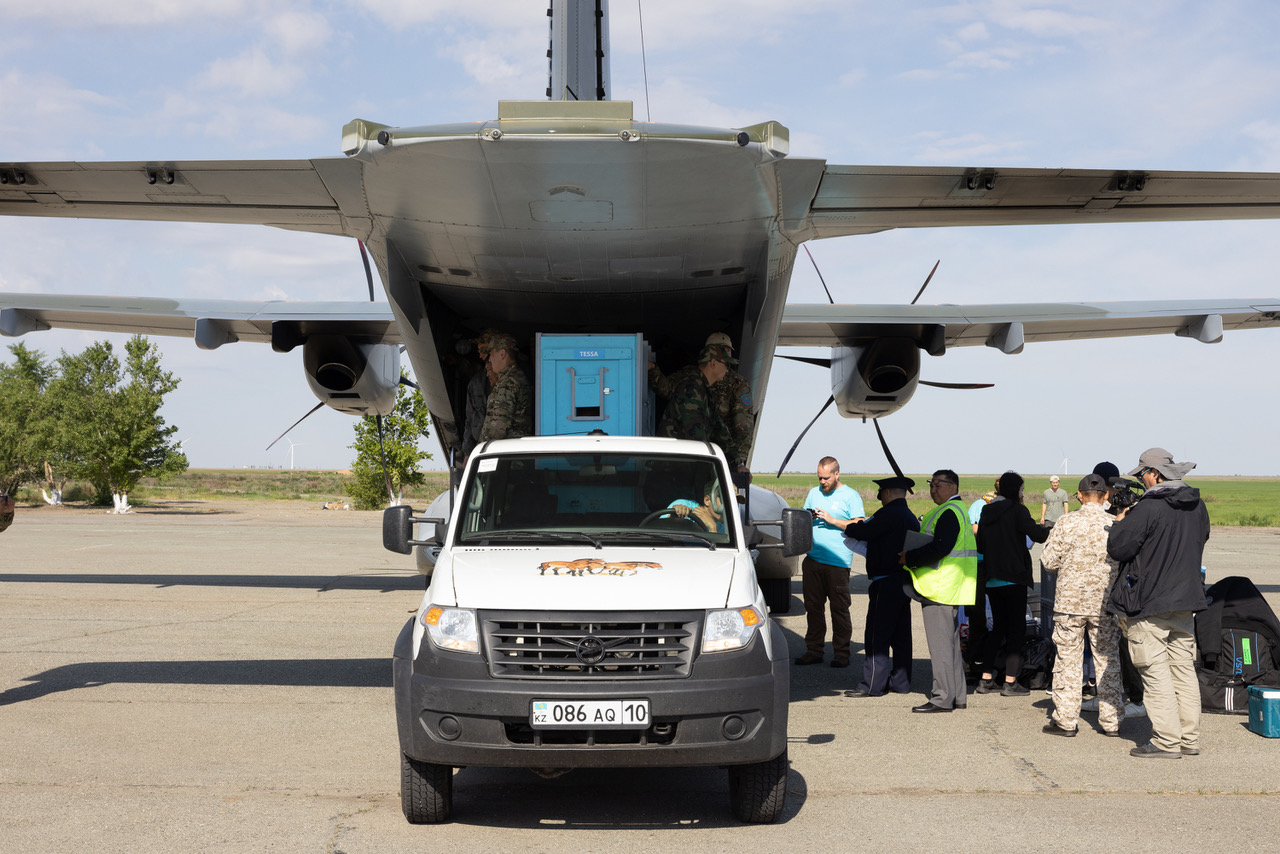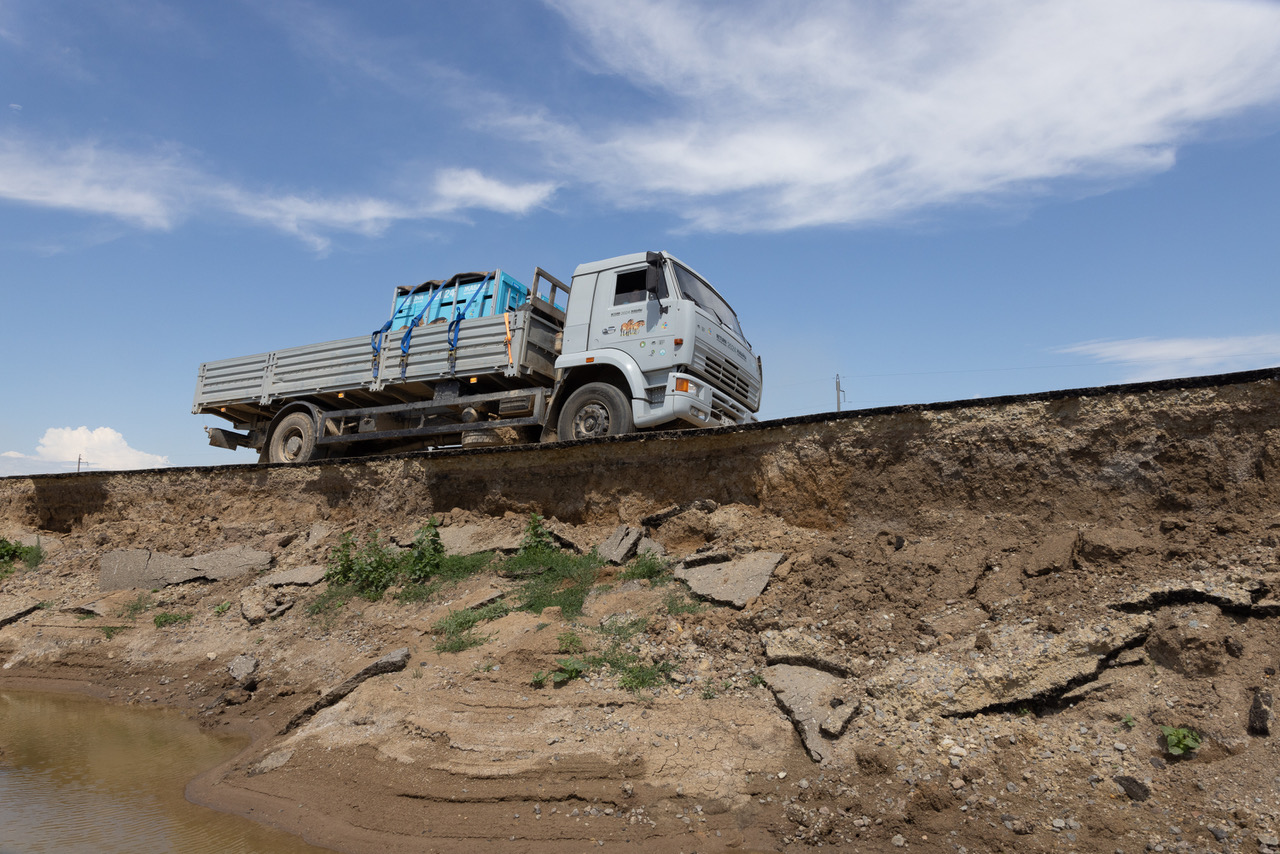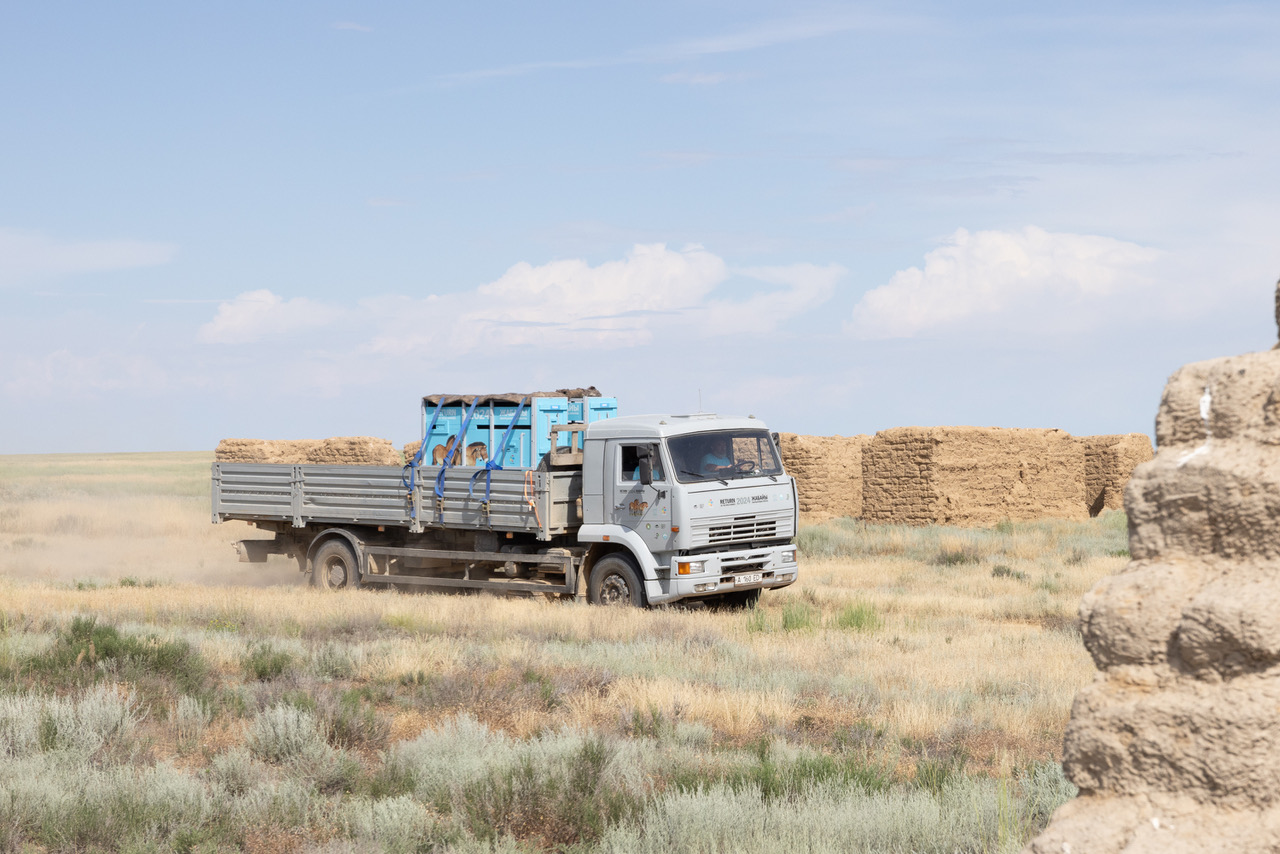
Releasing the Wespe mare from the transport box to the acclimatization enclosure. Photo by Václav Šilha, Prague Zoo
A CASA plane of the CR Army landed in Arkalyk in central Kazakhstan with four more Převalský horses. The mares Tessa, Wespe, Umbra and Sara completed an 18-hour flight from Berlin and then traveled on the backs of trucks over difficult terrain for over seven hours. Before 5:00 p.m. local time, the mares were released into the acclimatization pen at the Alibi reintroduction center in the Altyn Dala region. At the same time, since Tuesday, the stallion Zorro and two mares Zeta II and Ypsilonka, transported from Prague on the first of the flights, have been getting used to the next enclosure.

Unloading of Převalský’s horses from the CASA aircraft of the CR Army at the airport in Arkalyk after an 18-hour flight from Berlin. Photo by Václav Šilha, Prague Zoo
“This is an event of historical importance: The seven ‘rollers’ that we transported here with two CASA machines represent the first individuals of this species in central Kazakhstan in hundreds of years,” said the director of the Prague Zoo, Miroslav Bobek. “With the double transport, we have taken a significant step towards the return of the last wild horse to another area where they were found in the past. Our goal is to gradually transport at least forty individuals here so that a viable population can be created here. Few exemplify the meaning of modern zoos like The Return of the Wild Horses.”
Today, three mares born in Germany arrived in Altyn Dala, i.e. the Golden Steppe – a stout five-year-old Tessa originally from Tierpark Berlin, an equally old dark-legged Wespe born in the zoo in Weilburg and a three-and-a-half-year-old light-warming Umbra from the semi-natural reserve Aschaffenburg Schweinheim. They were joined by the youngest Sara, who will only be three years old in two weeks and who is the only one from France, from ZooSafari de Thoiry. All the candidates met in Tierpark Berlin in the past six months – similar to what happened here in Dolní Dobřejov, where the Prague Zoo runs a breeding station. The final selection of individuals suitable for transport, mainly with regard to their health status, was carried out by experts from the Prague Zoo together with colleagues from Tierpark Berlin.

The road on the way from the airport to the reintroduction center is in places devastated by the recent floods. Photo by Václav Šilha, Prague Zoo
Today, Tessa was the first to run out of the transport box into the enclosure, followed by Wespe, followed by Umbra, and Sary rounded out the foursome. They will not be joined with the stallion Zorro and the two mares Zeta II and Ypsilonka brought from Prague in order to ensure the genetic diversity of the local population. In the future, he will ideally form a harem with another stallion so that more stallions are bred in the place from the beginning. In two vast enclosures totaling 80 hectares, the seven horses will get used to the local conditions and to themselves under the close supervision of researchers. Before being released into the wild, they must demonstrate resistance to frost or parasites, as well as the ability to find suitable food under a thick snow cover. Their acclimatization will take about a year.
In cooperation with its partners, Prague Zoo is preparing another Kazakh transport for next spring. At the same time, however, preparations are underway for the first-ever transport of Převalský’s horses to the east of Mongolia, to the so-called Valley of the Monastery, in 2026. After a break of several years, this iconic ungulate returned to the Troy area of the Prague Zoo this year. People will now find Převalský’s horses alongside other Central Asian fauna in the Gobi exhibit near the top station of the cable car.
More about the project: zoopraha.cz/kazachstan-2024

Kamaz trucks with horses on their backs also passed long-abandoned houses made of burnt bricks during their journey through the steppes. Photo by Václav Šilha, Prague Zoo

